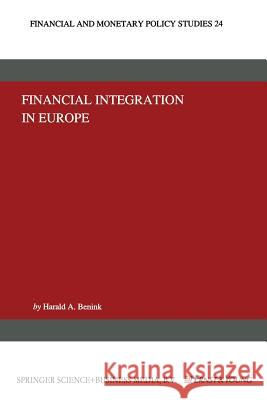Financial Integration in Europe » książka
Financial Integration in Europe
ISBN-13: 9789401048118 / Angielski / Miękka / 2013 / 204 str.
One of the key issues relating to the perfonnance of national economies is the efficiency of the financial system which stands at the heart of the capital-allocation process. There are two aspects which define efficiency. Static efficiency involves the ali-in difference between rates of return provided to ultimate savers and the cost of funds to users. This 'gap', or spread, reflects the direct costs of production (operating and administrative costs, cost of capital, etc.). It also reflects losses incurred in the financial process, as well as any monopoly profits earned and liquidity premiums. Financial processes that are considered 'statically inefficient' are usually characterised by high 'spreads' due to high overhead costs, high losses, barriers to entry, and the like. Dynamic efficiency is characterised by high rates of financial product and process innovation through time. Successful product and process innovation broadens the menu of financial products available to ultimate issuers, ultimate savers, or other agents along the various financial process channels described above. Probably the most powerful catalyst affecting the competitive dynamics of the financial services industry has been technological change.











